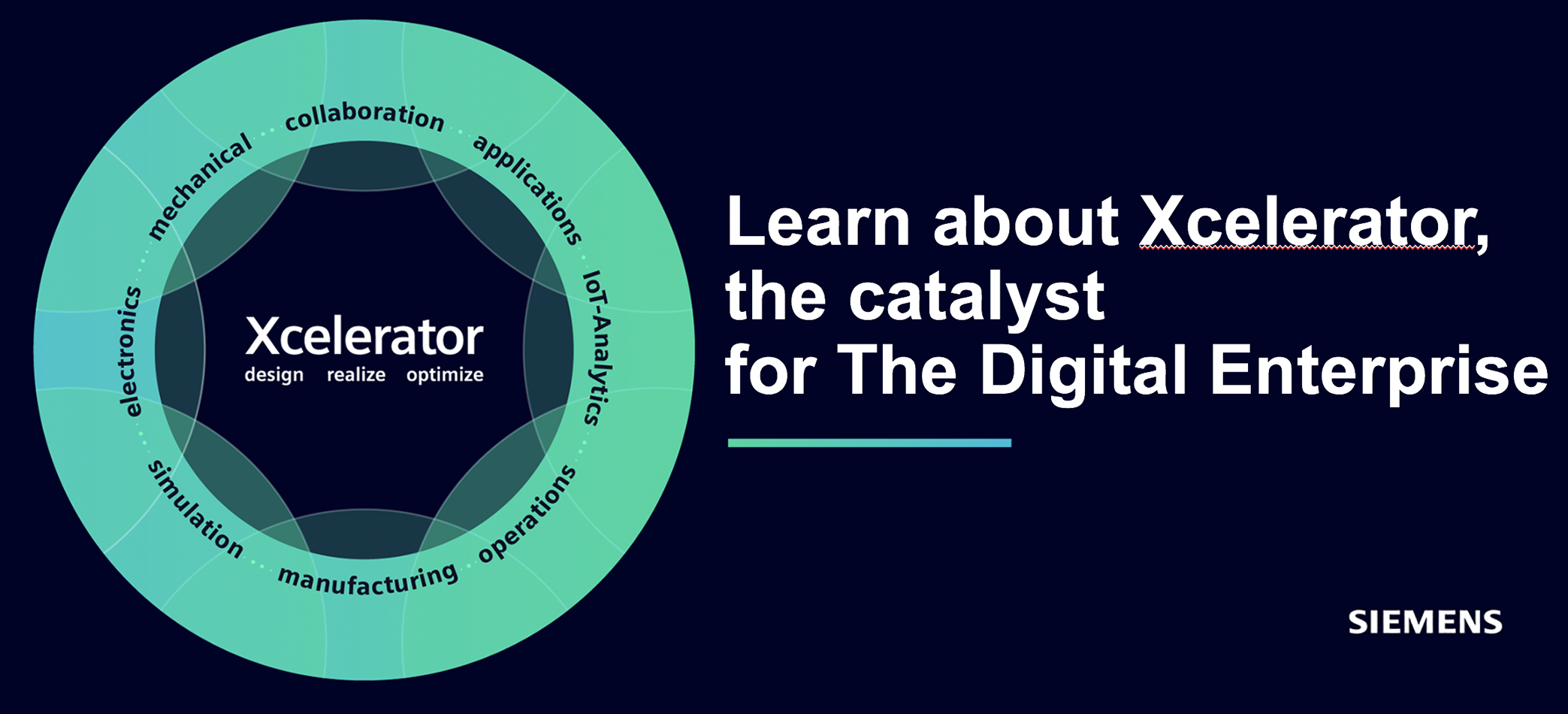Former SAP and Infor Man Takes Over at Unit4: “The Goal is to Reach...
MIKE ETTLING hands over the helm to SIMON PARIS. One of the major Nordic players in the ERP market, Unit4, is changing CEO. Mike Ettling is handing over the executive leadership to Simon Paris. Ettling has headed Unit4 for almost six years and has led the company to growth, created recurring revenue and established Unit4 as a major global player in cloud-based business systems.
The new boss, Simon Paris, is an experienced business leader with over 25 years in the technology industry, including senior positions at Infor and SAP. He was most recently CEO of Finastra, an international provider of software applications for financial services, where he led the company's transformation and growth strategy to become one of the largest FinTech companies in the world.
Unit4, which has invested heavily in cloud-based applications in recent years, writes in a press release that, "the transition ensures continuity for Unit4 and builds on a proven strategy that has elevated the company to a leading provider of cloud-based business systems for various industries." It is further claimed that the now announced transition has been preceded by careful planning where Ettling, together with the board, collaborated to ensure a seamless handover and continued strong momentum.
It is also clear that under Ettling's leadership, Unit4 has undergone a transformation into a Cloud-first company and achieved significant results in both product innovation and growth. Financially, Ettling points out that recurring revenues now account for 80 percent of the total. This level has been created by long-term organic growth, a functioning strategy for cloud migration and high customer satisfaction, which strengthens the company's reputation as a reliable partner for mid-sized organizations. The specialized, industry-focused applications enable customers to effectively manage their people, projects and operations with efficiency and reliability.
Morgan Seigler, who is an executive at Unit4's main owner, TA Associates, states that they have been very pleased with Mike Ettling's work:
"He has been an outstanding leader and we are grateful for his tremendous contribution. We believe that Simon's leadership, vision and experience will ensure a natural transition and help Unit4's continued success."
Ettling himself says that Simon Paris is an outstanding leader with a proven track record: "Simon Paris has all the qualities required to build on this foundation and lead us towards our ambitious goal of one billion euros in revenue. Over the past few years, we have transformed the company and established it as the industry leader in cloud-based ERP for service industries."
Clkick on the headline to read more on PLM&ERP News.
The new boss, Simon Paris, is an experienced business leader with over 25 years in the technology industry, including senior positions at Infor and SAP. He was most recently CEO of Finastra, an international provider of software applications for financial services, where he led the company's transformation and growth strategy to become one of the largest FinTech companies in the world.
Unit4, which has invested heavily in cloud-based applications in recent years, writes in a press release that, "the transition ensures continuity for Unit4 and builds on a proven strategy that has elevated the company to a leading provider of cloud-based business systems for various industries." It is further claimed that the now announced transition has been preceded by careful planning where Ettling, together with the board, collaborated to ensure a seamless handover and continued strong momentum.
It is also clear that under Ettling's leadership, Unit4 has undergone a transformation into a Cloud-first company and achieved significant results in both product innovation and growth. Financially, Ettling points out that recurring revenues now account for 80 percent of the total. This level has been created by long-term organic growth, a functioning strategy for cloud migration and high customer satisfaction, which strengthens the company's reputation as a reliable partner for mid-sized organizations. The specialized, industry-focused applications enable customers to effectively manage their people, projects and operations with efficiency and reliability.
Morgan Seigler, who is an executive at Unit4's main owner, TA Associates, states that they have been very pleased with Mike Ettling's work:
"He has been an outstanding leader and we are grateful for his tremendous contribution. We believe that Simon's leadership, vision and experience will ensure a natural transition and help Unit4's continued success."
Ettling himself says that Simon Paris is an outstanding leader with a proven track record: "Simon Paris has all the qualities required to build on this foundation and lead us towards our ambitious goal of one billion euros in revenue. Over the past few years, we have transformed the company and established it as the industry leader in cloud-based ERP for service industries."
Clkick on the headline to read more on PLM&ERP News.
F d SAP- och Infor-man tar över jobbet som toppchef på Unit4: ”Målet är...
MIKE ETTLING lämnar över rodret till SIMON PARIS. En av ERP-marknadens större nordiska spelare, Unit4, byter CEO. Det är Mike Ettling som lämnar över det exekutiva chefskapet till Simon Paris. Ettling har lett Unit4 i nästan sex år och lyft företaget till tillväxt, skapat återkommande intäkter och etablerat Unit4 som en stor global aktör inom molnbaserade affärssystem.
Nye chefen, Simon Paris, är en erfaren företagsledare med över 25 år inom teknikbranschen i bagaget, bland annat från ledande befattningar på Infor och SAP. Han var senast CEO för Finastra, en intenationell leverantör av mjukvaruapplikationer för finansiella tjänster, där han ledde företagets omvandling och tillväxtstrategi till att bli ett av de största FinTech-företagen i världen.
Unit4, som under de senaste åren satsat hårt på molnbaserade applikationer för organisationer, skriver i en pressrelease att, ”övergången säkerställer kontinuitet för Unit4 och bygger vidare på en beprövad strategi som lyft företaget till en ledande leverantör av molnbaserade affärssystem för olika branscher. ”Man hävdar vidare att den nu annonserade övergången har föregåtts av noggrann planering där Ettling tillsammans med styrelse samarbetat för att säkerställa en sömlös överlämning och ett fortsatt starkt momentum.
Klart är också att Unit4 under Ettlings ledning har genomgått en omvandling till ett Cloud-first-företag och uppnått betydande resultat inom både produktinnovation och tillväxt. Finansiellt pekar Ettling på att de återkommande intäkterna nu står för 80 procent av totalen. Denna framgång har skapats av en långsiktig organisk tillväxt, en fungerande strategi för molnmigrering och branschens bästa kundnöjdhet, vilket stärker företagets rykte som en pålitlig partner för medelstora organisationer. De specialiserade, branschfokuserade applikationerna gör det möjligt för kunderna att effektivt hantera sina medarbetare, projekt och verksamheter med effektivitet och tillförlitlighet.
Morgan Seigler, som är exekutiv bas på Unit4s huvudägare, TA Associates, konstaterar att man varit mycket nöjda med Mike Ettlings arbete:
"Han har varit en enastående ledare och vi är tacksamma för hans enorma bidrag. Vi tror att Simons ledarskap, vision och erfarenhet kommer att säkerställa en naturlig övergång och hjälpa till med Unit4s fortsatta framgång."
Själv säger Ettling att Simon Paris är en, enastående ledare med en dokumenterad meritlista och någon som jag har haft förmånen att arbeta framgångsrikt med tidigare: ”Paris har alla de kvaliteter som krävs för att bygga vidare på denna grund och leda oss mot vårt ambitiösa mål om en miljard euro i intäkter. Under de senaste åren har vi förvandlat företaget och etablerat det som branschledande inom molnbaserade affärssystem för tjänstebranscher.”
Klicka på rubriken för att läsa mer på PLM&ERP News.
Nye chefen, Simon Paris, är en erfaren företagsledare med över 25 år inom teknikbranschen i bagaget, bland annat från ledande befattningar på Infor och SAP. Han var senast CEO för Finastra, en intenationell leverantör av mjukvaruapplikationer för finansiella tjänster, där han ledde företagets omvandling och tillväxtstrategi till att bli ett av de största FinTech-företagen i världen.
Unit4, som under de senaste åren satsat hårt på molnbaserade applikationer för organisationer, skriver i en pressrelease att, ”övergången säkerställer kontinuitet för Unit4 och bygger vidare på en beprövad strategi som lyft företaget till en ledande leverantör av molnbaserade affärssystem för olika branscher. ”Man hävdar vidare att den nu annonserade övergången har föregåtts av noggrann planering där Ettling tillsammans med styrelse samarbetat för att säkerställa en sömlös överlämning och ett fortsatt starkt momentum.
Klart är också att Unit4 under Ettlings ledning har genomgått en omvandling till ett Cloud-first-företag och uppnått betydande resultat inom både produktinnovation och tillväxt. Finansiellt pekar Ettling på att de återkommande intäkterna nu står för 80 procent av totalen. Denna framgång har skapats av en långsiktig organisk tillväxt, en fungerande strategi för molnmigrering och branschens bästa kundnöjdhet, vilket stärker företagets rykte som en pålitlig partner för medelstora organisationer. De specialiserade, branschfokuserade applikationerna gör det möjligt för kunderna att effektivt hantera sina medarbetare, projekt och verksamheter med effektivitet och tillförlitlighet.
Morgan Seigler, som är exekutiv bas på Unit4s huvudägare, TA Associates, konstaterar att man varit mycket nöjda med Mike Ettlings arbete:
"Han har varit en enastående ledare och vi är tacksamma för hans enorma bidrag. Vi tror att Simons ledarskap, vision och erfarenhet kommer att säkerställa en naturlig övergång och hjälpa till med Unit4s fortsatta framgång."
Själv säger Ettling att Simon Paris är en, enastående ledare med en dokumenterad meritlista och någon som jag har haft förmånen att arbeta framgångsrikt med tidigare: ”Paris har alla de kvaliteter som krävs för att bygga vidare på denna grund och leda oss mot vårt ambitiösa mål om en miljard euro i intäkter. Under de senaste åren har vi förvandlat företaget och etablerat det som branschledande inom molnbaserade affärssystem för tjänstebranscher.”
Klicka på rubriken för att läsa mer på PLM&ERP News.
Blazing the Trail in CES 2025: Siemens is on the Move with New Industrial...
“WHAT HAPPENS IN LAS VEGAS doesn’t necessarily stay in Las Vegas – CES 2025 is the proof…” An early sign of spring in PLM and cutting-edge technology development is the CES tech trade show in Las Vegas. When it started today, Siemens was one of the most visible actors among the major PLM players. Several big things are poster pillars for the company, but not surprisingly, AI is the area most heavily promoted. The company’s CTO and Chief Strategy Officer, Peter Koerte, spoke, among other things, about a vision for the future where data, AI and software-defined automation will converge to, “enable unprecedented flexibility, optimization and continuous improvement across the world’s industries, for companies of all sizes.” Big ambitions of course, but also a message at the heart of Siemens’ presence at CES 2025, one of the world’s most influential technology events. Siemens is, Koerte noted, a global leader in industrial software and pointed to the fact that it is now taking bold new steps in industrial innovation.
“Industrial AI is a game changer that will create significant positive impacts in the real world across all industries,” he said and adden: “It allows us to harness the enormous amounts of data generated in industrial environments and transform them into insights that drive businesses. We are adding new AI capabilities across the entire Siemens Xcelerator portfolio to enable our customers to remain competitive, resilient and sustainable in an increasingly complex world.”
Among the pieces he specifically noted was that it is now bringing AI directly to the shop floor with the new “Industrial Copilot for Operations” solution. Among several benefits is that AI tasks can be run as close to machines as possible via edge computing. This facilitates rapid, real-time decision-making for operators and maintenance engineers, increasing productivity and minimizing downtime.
The Industrial Copilot ecosystem is continuously evolving to offer AI capabilities across the entire industrial value chain and to sectors including discrete and process manufacturing, infrastructure and mobility. This suite of copilots can improve human-machine collaboration across all experience levels, helping to accelerate development times and innovation cycles. Siemens Industrial Copilot will integrate with the Industrial Edge ecosystem, which has been enhanced with AI to deploy, operate and manage AI models within the production environment.
But there was more on the menu; such as Siemens' NVIDIA collaboration to deliver physically based visualization for product lifecycle management, an exciting customer collaboration with startup JetZero on an aircraft solution that paves the way towards net-zero operation via partial hydrogen propulsion, and the collaboration with Sony, which was already announced at CES last year, where the companies are now delivering immersive design opportunities with mixed-reality headsets and NX CAD software in combo.
Click on the title to read the full report on Siemens at CES 2025.
“Industrial AI is a game changer that will create significant positive impacts in the real world across all industries,” he said and adden: “It allows us to harness the enormous amounts of data generated in industrial environments and transform them into insights that drive businesses. We are adding new AI capabilities across the entire Siemens Xcelerator portfolio to enable our customers to remain competitive, resilient and sustainable in an increasingly complex world.”
Among the pieces he specifically noted was that it is now bringing AI directly to the shop floor with the new “Industrial Copilot for Operations” solution. Among several benefits is that AI tasks can be run as close to machines as possible via edge computing. This facilitates rapid, real-time decision-making for operators and maintenance engineers, increasing productivity and minimizing downtime.
The Industrial Copilot ecosystem is continuously evolving to offer AI capabilities across the entire industrial value chain and to sectors including discrete and process manufacturing, infrastructure and mobility. This suite of copilots can improve human-machine collaboration across all experience levels, helping to accelerate development times and innovation cycles. Siemens Industrial Copilot will integrate with the Industrial Edge ecosystem, which has been enhanced with AI to deploy, operate and manage AI models within the production environment.
But there was more on the menu; such as Siemens' NVIDIA collaboration to deliver physically based visualization for product lifecycle management, an exciting customer collaboration with startup JetZero on an aircraft solution that paves the way towards net-zero operation via partial hydrogen propulsion, and the collaboration with Sony, which was already announced at CES last year, where the companies are now delivering immersive design opportunities with mixed-reality headsets and NX CAD software in combo.
Click on the title to read the full report on Siemens at CES 2025.
Siemens på hugget under CES 2025: Innovationer inom industriell AI och digital tvillingar väcker...
”DET SOM HÄNDER I LAS VEGAS stannar inte nödvändigtvis i Las Vegas – det är CES 2025 beviset på…” Ett tidigt tecken på att vårsäsongen inom PLM, automation och allmänt när det gäller vass teknologiutveckling är den stora CES-mässan i Las Vegas, där alla med stora teknologi-ambitioner vill synas. När det startade idag, den 7 januari var Siemens en av de mest synliga aktörerna bland de stora PLM-spelarna. Flera saker stora saker är affischpelare för denna ledande PLM- och automationsspelare. Men inte överraskande är AI ett av de området man slår på trumman för. Bolagets styrelsemedlem, CTO och strategichef, Peter Koerte, berättade bl a om en vision för framtiden där data, AI och mjukvarudefinierad automation kommer att konvergera för att, ”möjliggöra oöverträffad flexibilitet, optimering och ständiga förbättringar över världens industrier, för företag av alla storlekar.” Stora ambitioner förstås och kärnan i Siemens närvaro vid CES 2025, ett av världens mest inflytelserika teknikevenemang. Siemens är, konstaterade Koerte inte utan goda anledningar, en global ledaren inom industriell mjukvara och pekade på att man nu tar än mer djärva steg i industriell innovation.
"Industriell AI är en spelomvandlare som kommer att skapa betydande positiva effekter i den verkliga världen inom alla branscher. Industriell AI låter oss utnyttja de enorma mängderna data som genereras i industriella miljöer och omvandla den till insikter som driver verklig affärseffekt. Vi lägger till nya industriella AI-kapaciteter i hela Siemens Xcelerator-portfölj för att göra det möjligt för våra kunder att förbli konkurrenskraftiga, motståndskraftiga och hållbara i en allt mer komplex värld", sa han.
Bland de bitar han specifikt noterade var att man nu tar Industrial AI direkt till verkstadsgolvet med den nya ”Industrial Copilot for Operations-lösningen”. Bland flera fördelar är att AI-uppgifter kan köras så nära maskiner som möjligt, via ”edge computing.” Detta underlättar snabbt beslutsfattande i realtid för operatörer och underhållsingenjörer, vilket ökar produktiviteten och minimerar stilleståndstiden. Industrial Copilots ekosystem utvecklas kontinuerligt för att erbjuda AI-kapacitet över hela den industriella värdekedjan och till sektorer som inkluderar diskret och processtillverkning, infrastruktur och mobilitet. Denna svit av copiloter kan förbättra samarbete mellan människa och maskin över alla erfarenhetsnivåer, vilket hjälper till att påskynda utvecklingstider och innovationscykler. Siemens Industrial Copilot kommer att integreras med Industrial Edge-ekosystemet, som har förbättrats med AI för att distribuera, driva och hantera AI-modeller inom produktionsmiljön.
Men här fanns mer på menyn; som Siemens NVIDIA-samarbete för att leverera fysiskt baserad visualisering för produktlivscykel-hantering, ett spännande kundsamarbete med startupen JetZero kring en flygplanslösning som banar väg mot netto-noll-drift via partitiell vätedrift, och samarbetet med Sony, som annonserades redan på CES ifjol, där bolagen nu levererar immersiva design-möjligheter med mixed-reality-headset och NX CAD-programvara i kombo.
Klicka på rubriken för att läsa hela reportaget kring Siemens på CES 2025.
"Industriell AI är en spelomvandlare som kommer att skapa betydande positiva effekter i den verkliga världen inom alla branscher. Industriell AI låter oss utnyttja de enorma mängderna data som genereras i industriella miljöer och omvandla den till insikter som driver verklig affärseffekt. Vi lägger till nya industriella AI-kapaciteter i hela Siemens Xcelerator-portfölj för att göra det möjligt för våra kunder att förbli konkurrenskraftiga, motståndskraftiga och hållbara i en allt mer komplex värld", sa han.
Bland de bitar han specifikt noterade var att man nu tar Industrial AI direkt till verkstadsgolvet med den nya ”Industrial Copilot for Operations-lösningen”. Bland flera fördelar är att AI-uppgifter kan köras så nära maskiner som möjligt, via ”edge computing.” Detta underlättar snabbt beslutsfattande i realtid för operatörer och underhållsingenjörer, vilket ökar produktiviteten och minimerar stilleståndstiden. Industrial Copilots ekosystem utvecklas kontinuerligt för att erbjuda AI-kapacitet över hela den industriella värdekedjan och till sektorer som inkluderar diskret och processtillverkning, infrastruktur och mobilitet. Denna svit av copiloter kan förbättra samarbete mellan människa och maskin över alla erfarenhetsnivåer, vilket hjälper till att påskynda utvecklingstider och innovationscykler. Siemens Industrial Copilot kommer att integreras med Industrial Edge-ekosystemet, som har förbättrats med AI för att distribuera, driva och hantera AI-modeller inom produktionsmiljön.
Men här fanns mer på menyn; som Siemens NVIDIA-samarbete för att leverera fysiskt baserad visualisering för produktlivscykel-hantering, ett spännande kundsamarbete med startupen JetZero kring en flygplanslösning som banar väg mot netto-noll-drift via partitiell vätedrift, och samarbetet med Sony, som annonserades redan på CES ifjol, där bolagen nu levererar immersiva design-möjligheter med mixed-reality-headset och NX CAD-programvara i kombo.
Klicka på rubriken för att läsa hela reportaget kring Siemens på CES 2025.
Svenska energibolag investerar i hybrida moln för att följa NIS2-direktivet om IT- och driftsäkerhet
EU-omfattande LAGSTIFTNING om CYBERSÄKERHET ställer HÖGA KRAV på DRIFTSSÄKERHET för SAMHÄLLSKRITISKA VERKSAMHETER. Halmstad Energi och Miljö tar ett stort kliv framåt i sin IT-säkerhetsstrategi genom att implementera hybrid cloud-teknik och mikrosegmentering, som ett led i att följa det nya NIS2-direktivet. Direktivet, som är en EU-omfattande lagstiftning om cybersäkerhet, trädde i kraft i Sverige i september, ställer höga krav på säkerhet och driftssäkerhet för samhällskritiska verksamheter, som kommunala energibolag. Även Öresundskraft och andra kommunala energibolag gör liknande investeringar. Men hur kan hybrid cloud-teknik möta framtidens krav på IT- och driftssäkerhet?
PLM&ERP News har diskuterat saken med Jesper Ottosson, chef för IT-infrastruktur på Halmstad Energi och Miljö (HEM) och Hampus Berg, infrastruktur- och nätverkstekniker på HEM. I dagens intervju de delar sin syn på saken och vikten av robusta säkerhetslösningar och hur hybrid cloud-teknik kan möta framtidens krav säkerthets- och driftområdena.
”NIS2 är omfattande och det finns en viss osäkerhet kring vad exakt som krävs. Samtidigt är det en positiv utveckling som ger oss bättre kontroll och för upp IT-säkerhet till ledningsnivå. På sikt kommer det gynna alla,” säger Jesper Ottosson.
För att möta direktivets krav arbetar HEM aktivt med att separera sina IT-nätverk från OT-nätverk, operativ teknik i produktionssystemen. Målet är att minska risken för attacker som påverkar produktionskritiska system. Mikrosegmentering är en viktig del av detta. Det är en teknik som isolerar olika delar av IT-miljön från varandra för att förhindra så kallad lateral spridning, alltså skadlig kod som rör sig sidledes mellan applikationer.
”Med Nutanix Flow kan vi mikrosegmentera våra nätverk och även skapa en tydlig separation mellan IT- och OT-miljöer. Det här innebär att vi kan skydda våra äldre OT-enheter, som ofta har lägre säkerhetsstandarder, från hot utan att behöva byta ut hela den infrastrukturen,” förklarar Hampus Berg.
Till saken hör att Halmstad Energi och Miljö, som kommunens energi- och avfallsbolag har breda åtaganden att leva upp till. Bolaget levererar el, värme, kyla, sophantering och energitjänster till kommuninvånarna och förser såväl företag som privatpersoner med energi.
Klicka på rubriken för att läsa mer på PLM&ERP News.
PLM&ERP News har diskuterat saken med Jesper Ottosson, chef för IT-infrastruktur på Halmstad Energi och Miljö (HEM) och Hampus Berg, infrastruktur- och nätverkstekniker på HEM. I dagens intervju de delar sin syn på saken och vikten av robusta säkerhetslösningar och hur hybrid cloud-teknik kan möta framtidens krav säkerthets- och driftområdena.
”NIS2 är omfattande och det finns en viss osäkerhet kring vad exakt som krävs. Samtidigt är det en positiv utveckling som ger oss bättre kontroll och för upp IT-säkerhet till ledningsnivå. På sikt kommer det gynna alla,” säger Jesper Ottosson.
För att möta direktivets krav arbetar HEM aktivt med att separera sina IT-nätverk från OT-nätverk, operativ teknik i produktionssystemen. Målet är att minska risken för attacker som påverkar produktionskritiska system. Mikrosegmentering är en viktig del av detta. Det är en teknik som isolerar olika delar av IT-miljön från varandra för att förhindra så kallad lateral spridning, alltså skadlig kod som rör sig sidledes mellan applikationer.
”Med Nutanix Flow kan vi mikrosegmentera våra nätverk och även skapa en tydlig separation mellan IT- och OT-miljöer. Det här innebär att vi kan skydda våra äldre OT-enheter, som ofta har lägre säkerhetsstandarder, från hot utan att behöva byta ut hela den infrastrukturen,” förklarar Hampus Berg.
Till saken hör att Halmstad Energi och Miljö, som kommunens energi- och avfallsbolag har breda åtaganden att leva upp till. Bolaget levererar el, värme, kyla, sophantering och energitjänster till kommuninvånarna och förser såväl företag som privatpersoner med energi.
Klicka på rubriken för att läsa mer på PLM&ERP News.
Det bästa från två världar när MICROSOFT och VOLKSWAGEN tillsammans med PTC utvecklar en...
Mjukvarutveckling: Är KÖPET av Codebeamer 2022 ett av PTCs SMARTASTE DRAG hittills? En av månadens mest intressanta nyheter på PLM-fronten ifråga om mjukvarutveckling är beskedet att PTC, Microsoft och Volkswagen utvecklar en copilot för generativ AI baserad på PTC’s ALM-lösning Codebeamer. Denna copilot kommer att stödja mjukvaruutveckling i fysiska produkter genom att göra det möjligt för mjukvaruingenjörer att skapa och hantera produktkrav mer effektivt, samt testa, validera och releasa dem.
Nyheten väcker frågan är om inte PTCs köp av Codebeamer 2022 är ett av bolagets smartaste drag de senaste tio åren. Lösningen förvärvades av PTC, som en del i köpet av tyska Intland Software, och passar väl in i en industrivärld där mjukvara, tillsammans med el/elektronik (E/E), blivit en nyckeldomän. Inte minst på fordonssidan där bilar i allt högre grad lever upp till bilden av ”datorer på fyra hjul,” eller mer korrekt, SDVs (Software Defined Vehicles). Hur passar PTC Codebeamer in i detta?
Främst för att Codebeamer är en kapabel Application Lifecycle Management-lösning (ALM) för avancerad mjukvaruutveckling. Den öppna plattformen utökar ALM-funktioner med flexibla konfigurationsmöjligheter för olika produktlinjer och ger i detta en unik konfigurerbarhet i de komplexa processerna. Tillverkare använder sig allmänt alltmer av mjukvara för att differentiera sina produkter och för att skapa olika versioner av dem. I synnerhet biltillverkare kräver tätt integrerade ALM- och variantbaserade lösningar för mjukvaruhantering för att planera och leverera de olika konfigurationerna som driver deras utbud.
På användarsidan spelar f ö PTCs senaste köp, Pure Systemes pure::variants-lösning, en kompletterande roll i Codebeamer-miljön; tillverkningsföretag utnyttjar denna lösning för att hantera olika varianter av mjukvaru- och systemtekniska tillgångar över sina produktkonfigurationer. Framför allt då inom reglerade industrier som fordons-, flyg- och medicinteknik-marknaderna.
Men nu tar PTC alltså tillsammans med Microsoft och Volkswagen Group nya utvecklingssteg, som går ut på att man ska bädda in generativ AI via Microsoft Azures AI-kapabiliteter. Till bakgrunden hör att Volkswagen-koncernen för ett drygt år sedan tog ett principbeslut på en Codebeamer-satsning, där lösningen ska användas för att integrera, utveckla och kostnadseffektivt underhålla de allt komplexare mjukvarorna. Utvecklingen av Codebeamer Copilot bygger alltså på VWs upptag av ALM-plattformen över alla bolagets märken och fordonsprojekt.
Onekligen en substantiell beställning från den tyska fordonsjätten–som bl a också äger Audi-, Porsche-, Seat- och Skoda-märkena–som både tekniskt och kommersiellt kan leda hur långt som helst. Det är inte heller bara VW som är intresserade av Codebeamer…
I en kommentar säger Robert Kattner, chef för IT-teknik på VW Group: "Microsoft Azure AI i Codebeamer-mjukvaran kan hjälpa oss med att skapa nya specifikationer och testfall. Det kan också förbättra kvaliteten på våra krav genom att ta bort dubbletter och kontrollera mot befintliga kvalitetsstandarder.”
"Det bästa från två världar," säger PTCs CPO, Kevin Wrenn.
Klicka på rubriken för att läsa mer på PLM&ERP News.
Nyheten väcker frågan är om inte PTCs köp av Codebeamer 2022 är ett av bolagets smartaste drag de senaste tio åren. Lösningen förvärvades av PTC, som en del i köpet av tyska Intland Software, och passar väl in i en industrivärld där mjukvara, tillsammans med el/elektronik (E/E), blivit en nyckeldomän. Inte minst på fordonssidan där bilar i allt högre grad lever upp till bilden av ”datorer på fyra hjul,” eller mer korrekt, SDVs (Software Defined Vehicles). Hur passar PTC Codebeamer in i detta?
Främst för att Codebeamer är en kapabel Application Lifecycle Management-lösning (ALM) för avancerad mjukvaruutveckling. Den öppna plattformen utökar ALM-funktioner med flexibla konfigurationsmöjligheter för olika produktlinjer och ger i detta en unik konfigurerbarhet i de komplexa processerna. Tillverkare använder sig allmänt alltmer av mjukvara för att differentiera sina produkter och för att skapa olika versioner av dem. I synnerhet biltillverkare kräver tätt integrerade ALM- och variantbaserade lösningar för mjukvaruhantering för att planera och leverera de olika konfigurationerna som driver deras utbud.
På användarsidan spelar f ö PTCs senaste köp, Pure Systemes pure::variants-lösning, en kompletterande roll i Codebeamer-miljön; tillverkningsföretag utnyttjar denna lösning för att hantera olika varianter av mjukvaru- och systemtekniska tillgångar över sina produktkonfigurationer. Framför allt då inom reglerade industrier som fordons-, flyg- och medicinteknik-marknaderna.
Men nu tar PTC alltså tillsammans med Microsoft och Volkswagen Group nya utvecklingssteg, som går ut på att man ska bädda in generativ AI via Microsoft Azures AI-kapabiliteter. Till bakgrunden hör att Volkswagen-koncernen för ett drygt år sedan tog ett principbeslut på en Codebeamer-satsning, där lösningen ska användas för att integrera, utveckla och kostnadseffektivt underhålla de allt komplexare mjukvarorna. Utvecklingen av Codebeamer Copilot bygger alltså på VWs upptag av ALM-plattformen över alla bolagets märken och fordonsprojekt.
Onekligen en substantiell beställning från den tyska fordonsjätten–som bl a också äger Audi-, Porsche-, Seat- och Skoda-märkena–som både tekniskt och kommersiellt kan leda hur långt som helst. Det är inte heller bara VW som är intresserade av Codebeamer…
I en kommentar säger Robert Kattner, chef för IT-teknik på VW Group: "Microsoft Azure AI i Codebeamer-mjukvaran kan hjälpa oss med att skapa nya specifikationer och testfall. Det kan också förbättra kvaliteten på våra krav genom att ta bort dubbletter och kontrollera mot befintliga kvalitetsstandarder.”
"Det bästa från två världar," säger PTCs CPO, Kevin Wrenn.
Klicka på rubriken för att läsa mer på PLM&ERP News.
Digitization and AI Central Themes When German PLM Challanger CONTACT Drew Record Crowds
"DON'T WAIT, JUST DO IT NOW!" The German software developer CONTACT Software is a European PLM and IoT player, which is growing quite quickly. The company, founded by Karl Heinz Zachries, sees it as its mission to make complex product data more accessible and connect employees across technical and organizational boundaries. Pretty much spot on what most PLM developers are aiming for today. In terms of revenue, it is not one of the big names in the PLM industry, the company brings in just under 60 million dollars. But they are growing strongly and have almost doubled their revenue compared to 2020 ($32 million).
The main product, CIM Database, is an open and scalable PLM system. Its main advantages are solutions for collaboration and faster processes in projects reaching across disciplines, systems and organizations. The company claims that CIM Database's component architecture, "simplifies deployment and helps companies respond to new demands with agility." In this, it can be noted that the underlying open platform CONTACT Elements means that CIM Database PLM can be easily connected to IoT systems, such as Contact's own digital twin platform "Elements for IoT." This, says Contact leader, CEO Maximilian Zachries, means that you can fully exploit the potential for innovative product development with a digital thread end-to-end throughout the entire product life cycle. What makes Contact Software relevant right now is that it recently held a global user event in Munich that bears witness to the power of growth: Contact Open World 2024 actually attracted around 700 participants from 20 countries which was a new visitor record.
Generally, during the event, the company emphasized its position as a digitization partner and presented innovative solutions in the areas of PLM, IoT and AI, artificial intelligence, together with customers and partners. All under the motto "Fast Forward Digital Transformation". PIA Automation's Thomas Ernst's advice to the audience in connection with his case study was typical: "Don't wait, others are doing it now!"
From the opening keynote by CEO Maximilian Zachries to the presentations by science journalist Ranga Yogeshwar and AI expert Kenza Ait Si Abbou Lyadini, two topics unsurprisingly took center stage: AI and the interconnection of sustainability and economic efficiency.
Zacharies emphasized that systematic and rapid digitization is essential to navigate the challenging times of the age: "Pure data is the foundation - not just for AI, but for digitization as a whole," he said.
The company's AI manager, CIAO, Dr. Udo Göbel, also introduced upcoming AI applications in CONTACT's Elements platform, including a search solution for similar CAD models.
Click on the headline below to read the full article on PLM&ERP News.
The main product, CIM Database, is an open and scalable PLM system. Its main advantages are solutions for collaboration and faster processes in projects reaching across disciplines, systems and organizations. The company claims that CIM Database's component architecture, "simplifies deployment and helps companies respond to new demands with agility." In this, it can be noted that the underlying open platform CONTACT Elements means that CIM Database PLM can be easily connected to IoT systems, such as Contact's own digital twin platform "Elements for IoT." This, says Contact leader, CEO Maximilian Zachries, means that you can fully exploit the potential for innovative product development with a digital thread end-to-end throughout the entire product life cycle. What makes Contact Software relevant right now is that it recently held a global user event in Munich that bears witness to the power of growth: Contact Open World 2024 actually attracted around 700 participants from 20 countries which was a new visitor record.
Generally, during the event, the company emphasized its position as a digitization partner and presented innovative solutions in the areas of PLM, IoT and AI, artificial intelligence, together with customers and partners. All under the motto "Fast Forward Digital Transformation". PIA Automation's Thomas Ernst's advice to the audience in connection with his case study was typical: "Don't wait, others are doing it now!"
From the opening keynote by CEO Maximilian Zachries to the presentations by science journalist Ranga Yogeshwar and AI expert Kenza Ait Si Abbou Lyadini, two topics unsurprisingly took center stage: AI and the interconnection of sustainability and economic efficiency.
Zacharies emphasized that systematic and rapid digitization is essential to navigate the challenging times of the age: "Pure data is the foundation - not just for AI, but for digitization as a whole," he said.
The company's AI manager, CIAO, Dr. Udo Göbel, also introduced upcoming AI applications in CONTACT's Elements platform, including a search solution for similar CAD models.
Click on the headline below to read the full article on PLM&ERP News.
Mot 2025 – om värdet av att möta den digitala transformationen med en helhetsmässig...
"Ökad komplexitet och ett tufft marknadstryck skapar nya spelplaner." De senaste åren har utan tvekan varit dramatiska inom industriell produktframtagning. På alla nivåer har digitaliseringstrenden, AI, digitala tvillingar, trådar, industriella metaverse och annat fört med sig vad som ser ut att landa i helt nya spelplaner. I detta ska vi heller inte bortse från påfrestningar som det ofta osäkra omvärldsläget skapar.
Det är utan tvekan värt att fundera över, analysera och agera på detta när vi går in i ett nytt år om några veckor. Dagens gästkrönikör på PLM&ERP News, Dale Tutt, VP för Global Industry Strategy, Siemens Digital Industries Software, noterar att han under vart och ett av de senaste åren reflekterat över de stora trenderna och utmaningarna som PLM-branschen har upplevt och delat sitt perspektiv på hur dessa krafter kommer att utvecklas och vilka nya strategier eller tillvägagångssätt dynamiken motiverar.
"Förra året undersökte jag hur förändringar i stora industriella trender hade skapat ett tryck på företagen och vilka effekter detta skulle ha på företagen 2024. Detta marknadstryck har knappast minskat inför 2025. Komplexiteten i produkter, tillverkningsprocesser och leveranskedjor fortsätter att öka, särskilt eftersom avancerad elektronik och mjukvara står för en större andel av produktfunktionaliteten. Tillväxten i komplexitet inom flera områden görs mer pressande av en acceleration i produktutvecklings-cykler mellan branscher eftersom företag söker konkurrensfördelar genom innovation. Samtidigt försvårar nya hållbarhetsregleringar och intensiv konkurrens om medarbetare med nyckelkompetenser uppgiften att vägleda ett företag genom detta tryck", skriver han och pekar på värdet av att bygga en holistisk strategi på vägen framåt.
I Siemens PLM-division, Siemens Digital Industries Software, leder Dale Tutt ett team av experter för att utveckla och genomföra branschspecifika produkt- och marknadsföringsstrategier i samarbete med de globala produkt-, försäljnings- och affärsutvecklingsteamen. Med över fem års erfarenhet i denna roll kombinerat med lång erfarenhet inom flyg- och försvarsindustrin, har Tutt en djup förståelse för de utmaningar och möjligheter som företag står inför i sina digitala transformationsresor.
"När jag blickar framåt mot 2025, skulle jag vilja fokusera på de grundläggande skälen till varför företag bör driva digital transformation och utforska hela omfattningen av vad digital transformation innebär", skriver han och noterar att det finns samtidiga osäkerheter på marknaden som kan skapa ett industriellt landskap som känns kaotiskt, som förändras snabbt och utan förvarning. "Vår instinkt är att agera som svar på kaos. Men när det gäller att bygga för industrins framtid är det avgörande att vi reagerar först genom att analysera situationen, för det andra genom att göra en plan och för det tredje genom att genomföra den planen. Sann digital transformation är en långsiktig strävan som kommer att ge kraftfulla fördelar för företag som använder teknologier inom nyckelområden,” summerar han. Vad handlar detta om?
Klicka på rubriken för att läsa hela artikeln på PLM&ERP News.
Det är utan tvekan värt att fundera över, analysera och agera på detta när vi går in i ett nytt år om några veckor. Dagens gästkrönikör på PLM&ERP News, Dale Tutt, VP för Global Industry Strategy, Siemens Digital Industries Software, noterar att han under vart och ett av de senaste åren reflekterat över de stora trenderna och utmaningarna som PLM-branschen har upplevt och delat sitt perspektiv på hur dessa krafter kommer att utvecklas och vilka nya strategier eller tillvägagångssätt dynamiken motiverar.
"Förra året undersökte jag hur förändringar i stora industriella trender hade skapat ett tryck på företagen och vilka effekter detta skulle ha på företagen 2024. Detta marknadstryck har knappast minskat inför 2025. Komplexiteten i produkter, tillverkningsprocesser och leveranskedjor fortsätter att öka, särskilt eftersom avancerad elektronik och mjukvara står för en större andel av produktfunktionaliteten. Tillväxten i komplexitet inom flera områden görs mer pressande av en acceleration i produktutvecklings-cykler mellan branscher eftersom företag söker konkurrensfördelar genom innovation. Samtidigt försvårar nya hållbarhetsregleringar och intensiv konkurrens om medarbetare med nyckelkompetenser uppgiften att vägleda ett företag genom detta tryck", skriver han och pekar på värdet av att bygga en holistisk strategi på vägen framåt.
I Siemens PLM-division, Siemens Digital Industries Software, leder Dale Tutt ett team av experter för att utveckla och genomföra branschspecifika produkt- och marknadsföringsstrategier i samarbete med de globala produkt-, försäljnings- och affärsutvecklingsteamen. Med över fem års erfarenhet i denna roll kombinerat med lång erfarenhet inom flyg- och försvarsindustrin, har Tutt en djup förståelse för de utmaningar och möjligheter som företag står inför i sina digitala transformationsresor.
"När jag blickar framåt mot 2025, skulle jag vilja fokusera på de grundläggande skälen till varför företag bör driva digital transformation och utforska hela omfattningen av vad digital transformation innebär", skriver han och noterar att det finns samtidiga osäkerheter på marknaden som kan skapa ett industriellt landskap som känns kaotiskt, som förändras snabbt och utan förvarning. "Vår instinkt är att agera som svar på kaos. Men när det gäller att bygga för industrins framtid är det avgörande att vi reagerar först genom att analysera situationen, för det andra genom att göra en plan och för det tredje genom att genomföra den planen. Sann digital transformation är en långsiktig strävan som kommer att ge kraftfulla fördelar för företag som använder teknologier inom nyckelområden,” summerar han. Vad handlar detta om?
Klicka på rubriken för att läsa hela artikeln på PLM&ERP News.
SKF lånar fem miljarder för att snabba på grön omställning i Europa – tung...
Produktutveckling/HÅLLBAR INNOVATION i PTC- och SIEMENS-miljö och i SAPs MOLN. Kullagertilljätten SKF satsar hårt på att utveckla lösningar och metoder som kan bidra till den gröna omställningen. Detta är bakgrunden till att man nu tar upp ett lån på nära fem miljarder kronor från EIB, Europeiska InvesteringsBanken, för ett projekt där fokus ligger på förnybar energi och elektromobilitet.
För pengarna tänker SKF driva relaterad forskning för att utveckla sin teknik inom kullager-, tätnings- och smörjsystem under de kommande fyra åren vid anläggningar i Österrike, Frankrike, Tyskland, Italien, Nederländerna och Sverige.
Hur stor är den gröna potentialen i kullager? Större än man skulle kunna tro. Saken är den att finns det kullager, så finns det friktion och i dagsläget går cirka 20 procent av den globala energin åt till att övervinna friktion. Det är en av de mer spännande attackvinklarna i det man nu tänker utveckla.
De SKF-domäner som kommer omfattas av EIB-pengarna är materialforskning, produktdesign, avancerade tillverkningsprocesser, digitalisering och prediktiv teknik. I pressmaterialet pekar man ut framför allt två exempel: Ett är att minska friktionen och förlänga underhållsintervallen i elektriska dragsystem, ett annat är att förbättra effektiviteten hos vindturbin-växellådor.
”Syftet med vår strategi är att skapa ett betydande värde för kunderna på målmarknaderna genom hållbar innovation, en ökad effektivitet och smidighet”, säger SKFs koncernchef Rickard Gustafson. ”Med denna finansiering, fortsätter vi satsningarna på att ta fram smarta och hållbara lösningar som stöder övergången till en mer hållbar värld.”
På vägen mot en hållbarare värld spelar idag, vid sidan av innovativ tankeverksamhet, också systemmiljöerna för industriellt IT-stöd viktiga roller. Hur ser de ut på SKF? När det gäller PLM- och affärssystem-miljön landar den gröna satsningen i ett tämligen diversifierat landskap. Man har skapat en produktutvecklingsmiljö som primärt bygger på PTC-verktyg när det gäller basal produktdesign i CAD och PDM, och jobbat med Siemens Digital Industries Closed-Loop Manufacturing-koncept när det gäller tillverkningsupplägg. Till detta kommer SAP på ERP och tangerande PLM-relaterade bitar och nu senast en molnmigrering av det lokalt installerade affärssystemet SAP S/4HANA.
Tre tunga pelare i de upplägg man jobbat med har handlat om digitala tvillingar av produkterna, tillverkningslinorna och av produkter i kundens tjänst. I detta arbetar SKF med PTCs Creo CAD och Windchill PDM, Siemens Teamcenter och på affärssystemsidan med SAP som huvudverktyg.
SAP har för övrigt en intressant position i detta, inte minst sett till miljöaspekterna: SKF valde i somras "RISE with SAP" för att migrera S/4HANA till molnet. Syftet är att, ”förenkla IT-infrastrukturen och använda ny teknik som AI och maskininlärning.” Genom flytten till molnet tar SKF bl a sikte på att anpassa sig till nya hållbarhetspolicyer och regeländringar – och använda grön koldioxidredovisning (green ledger). Vi tittar lite närmare på framför allt SAP-installationen i dagens artikel, men också allmänt kring bolagets PLM-upplägg.
Klicka på rubriken för att läsa mer på PLM&ERP News.
För pengarna tänker SKF driva relaterad forskning för att utveckla sin teknik inom kullager-, tätnings- och smörjsystem under de kommande fyra åren vid anläggningar i Österrike, Frankrike, Tyskland, Italien, Nederländerna och Sverige.
Hur stor är den gröna potentialen i kullager? Större än man skulle kunna tro. Saken är den att finns det kullager, så finns det friktion och i dagsläget går cirka 20 procent av den globala energin åt till att övervinna friktion. Det är en av de mer spännande attackvinklarna i det man nu tänker utveckla.
De SKF-domäner som kommer omfattas av EIB-pengarna är materialforskning, produktdesign, avancerade tillverkningsprocesser, digitalisering och prediktiv teknik. I pressmaterialet pekar man ut framför allt två exempel: Ett är att minska friktionen och förlänga underhållsintervallen i elektriska dragsystem, ett annat är att förbättra effektiviteten hos vindturbin-växellådor.
”Syftet med vår strategi är att skapa ett betydande värde för kunderna på målmarknaderna genom hållbar innovation, en ökad effektivitet och smidighet”, säger SKFs koncernchef Rickard Gustafson. ”Med denna finansiering, fortsätter vi satsningarna på att ta fram smarta och hållbara lösningar som stöder övergången till en mer hållbar värld.”
På vägen mot en hållbarare värld spelar idag, vid sidan av innovativ tankeverksamhet, också systemmiljöerna för industriellt IT-stöd viktiga roller. Hur ser de ut på SKF? När det gäller PLM- och affärssystem-miljön landar den gröna satsningen i ett tämligen diversifierat landskap. Man har skapat en produktutvecklingsmiljö som primärt bygger på PTC-verktyg när det gäller basal produktdesign i CAD och PDM, och jobbat med Siemens Digital Industries Closed-Loop Manufacturing-koncept när det gäller tillverkningsupplägg. Till detta kommer SAP på ERP och tangerande PLM-relaterade bitar och nu senast en molnmigrering av det lokalt installerade affärssystemet SAP S/4HANA.
Tre tunga pelare i de upplägg man jobbat med har handlat om digitala tvillingar av produkterna, tillverkningslinorna och av produkter i kundens tjänst. I detta arbetar SKF med PTCs Creo CAD och Windchill PDM, Siemens Teamcenter och på affärssystemsidan med SAP som huvudverktyg.
SAP har för övrigt en intressant position i detta, inte minst sett till miljöaspekterna: SKF valde i somras "RISE with SAP" för att migrera S/4HANA till molnet. Syftet är att, ”förenkla IT-infrastrukturen och använda ny teknik som AI och maskininlärning.” Genom flytten till molnet tar SKF bl a sikte på att anpassa sig till nya hållbarhetspolicyer och regeländringar – och använda grön koldioxidredovisning (green ledger). Vi tittar lite närmare på framför allt SAP-installationen i dagens artikel, men också allmänt kring bolagets PLM-upplägg.
Klicka på rubriken för att läsa mer på PLM&ERP News.
Siemens Q4 and Successful Fiscal 2024: PLM is Doing Well, Tougher for the Automation...
"THE PURCHASE OF ALTAIR CAN CHANGE A LOT." When Siemens AG’s President and CEO, Roland Busch, presented the company's figures for the fiscal year 2024 (ending September 30) last week, he was quite satisfied with a lot, but not everything. In total, Siemens AG generated revenues of €75.9 billion and a net of 9.0 billion euros. "A good result," he said, not least given the tough global environment. Sure, revenues for the entire operation increased by a relatively modest 3% compared to fiscal year 2023, when they stood at €74.9 billion. But success in financial and commercial terms depends not only on the size of the revenue level; profit and future prospects are also highly relevant parameters, and here Siemens can point to several positive factors:
"Yes, and in another successful fiscal year, we delivered record profit and stringently executed our strategy," Busch summed up.
In general, he noted that it benefited in particular from continued strong demand for electrification, transport and industrial software offerings. That is, much of what lies within the scope of what the company's PLM division, Siemens Digital Industries Software, produces. This part of the business also seems to be going really well with good growth in software revenues and related services, not least regarding the development on the SaaS, Xcelerator-as-a-Service and cloud side.
It looks more challenging for the automation division, something that Busch said was offset by very strong growth in the Mobility division and a considerable increase in Smart Infrastructure.
From a PLM point of view, however, it is of course interesting to see continued strong growth. In this, SaaS is of particular interest. This is how the head of the PLM division, Tony Hemmelgarn, comments to PLM&ERP News on the development regarding ARR, Annual Recurring Revenues, a measure of annual subscription revenues, type SaaS:
"We are very pleased with the SaaS transition,” he says. “Over the past three years, we have delivered impressive results, and we will continue this momentum into our fiscal year 2025. Our ARR growth reached a very healthy level of plus 14% year-over-year and our plan is to maintain the ARR growth in the low plus tens in FY2025, which is above our original 2021 CMD communicated (Capital Market Day) target of 10% annual ARR growth.
Hemmelgarn further says: “Speaking of our SaaS transition, the cloud portion is now at 1.8 billion euros, corresponding to 42% of ARR, exceeding our target of 40% a year ahead of schedule. And I have asked my team to drive towards the 50% mark by the end of fiscal year 2025.”
Bright future prospects, then, but there’s more, Roland Busch noted: "Starting in fiscal year 2025, we will take Siemens to the next level of value creation. We will continue to invest in R&D and M&A to ensure faster growth based on our technical strengths and ability to scale across industries. Our planned acquisition of Altair strengthens our leadership in industrial software and AI." This can change a lot.
Click on the headline to read the full article on PLM&ERP News.
"Yes, and in another successful fiscal year, we delivered record profit and stringently executed our strategy," Busch summed up.
In general, he noted that it benefited in particular from continued strong demand for electrification, transport and industrial software offerings. That is, much of what lies within the scope of what the company's PLM division, Siemens Digital Industries Software, produces. This part of the business also seems to be going really well with good growth in software revenues and related services, not least regarding the development on the SaaS, Xcelerator-as-a-Service and cloud side.
It looks more challenging for the automation division, something that Busch said was offset by very strong growth in the Mobility division and a considerable increase in Smart Infrastructure.
From a PLM point of view, however, it is of course interesting to see continued strong growth. In this, SaaS is of particular interest. This is how the head of the PLM division, Tony Hemmelgarn, comments to PLM&ERP News on the development regarding ARR, Annual Recurring Revenues, a measure of annual subscription revenues, type SaaS:
"We are very pleased with the SaaS transition,” he says. “Over the past three years, we have delivered impressive results, and we will continue this momentum into our fiscal year 2025. Our ARR growth reached a very healthy level of plus 14% year-over-year and our plan is to maintain the ARR growth in the low plus tens in FY2025, which is above our original 2021 CMD communicated (Capital Market Day) target of 10% annual ARR growth.
Hemmelgarn further says: “Speaking of our SaaS transition, the cloud portion is now at 1.8 billion euros, corresponding to 42% of ARR, exceeding our target of 40% a year ahead of schedule. And I have asked my team to drive towards the 50% mark by the end of fiscal year 2025.”
Bright future prospects, then, but there’s more, Roland Busch noted: "Starting in fiscal year 2025, we will take Siemens to the next level of value creation. We will continue to invest in R&D and M&A to ensure faster growth based on our technical strengths and ability to scale across industries. Our planned acquisition of Altair strengthens our leadership in industrial software and AI." This can change a lot.
Click on the headline to read the full article on PLM&ERP News.














